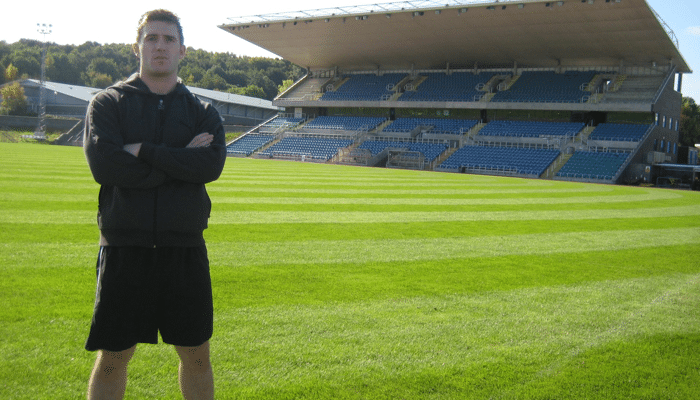
It’s easy to train an activity when you’re calm, relaxed and not tired. But being able to execute those same movements correctly when you’re fatigued and gasping for breath is something entirely different.
In this guest post, strength and conditioning coach Brendan Chaplin talks about some specific drills to train your skills under pressure.
———————————————————
Training MMA Skills Under Pressure, by Brendan Chaplin
———————————————————

One of the main areas in rugby league strength and conditioning training I utilize is the concept of ‘skills under fatigue’. This is very simple: the athlete performs the key game related skills and tactics under fatigue.
How do we train for this?
Well one of the ways is the integration of skill training with conditioning. When I am training my fighters I always try to utilise this concept within my sessions. So for example I will have fighters do circuits with general movements included within them such as powerbag throws, tackle bag drives, sled pulling, high pulls etc and also key movement skills such as jab and shoot, floor based movement with the bungee cord, clinching and pummeling and other key areas.
I also think there is a clear progression to this conditioning work. That is the clear integration of the technical and conditioning coaches work. So within a technical session you may be isolating some technical striking work. After 8 minutes you might move to a med ball circuit emphasising power development for 5 minutes duration. You would then switch straight back to more integrated work perhaps some jab sparring, before again switching back to conditioning work using ladders and hurdles to emphasise footwork.
I think this is the future for high level strength and conditioning for fight sports. Quick and smooth transitions between the sessions to allow the athletes to develop skills whilst under fatigue. I do believe this type of training is more appropriate for advanced athletes as clearly the beginners need to develop the physical literacy and the skill sets separately, build their work capacity over time, before being put into this type of training session.
I think the positives of this work are huge!
Lower volume of separate conditioning sessions required therefore more recovery time, greater specificity of training and also opponent specific training. You will also get greater athlete buy-in as well in most cases.
The cons?? This type of conditioning requires a greater understanding of the sport by the conditioning professional, so look for someone with a good MMA background as well as sound strength and conditioning background!


